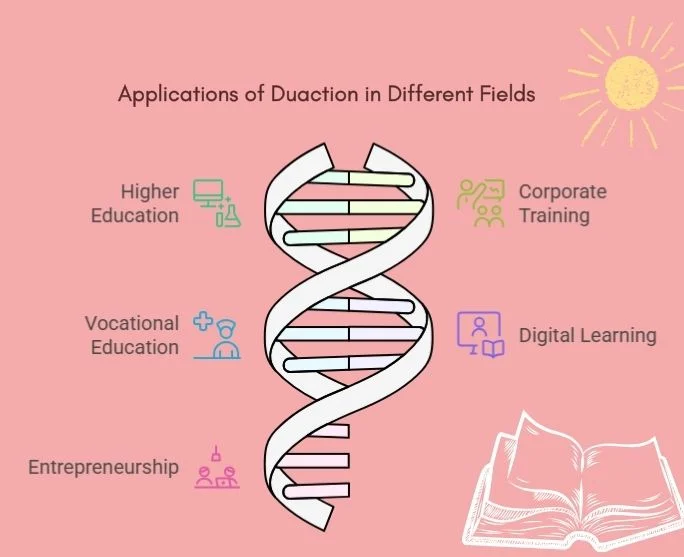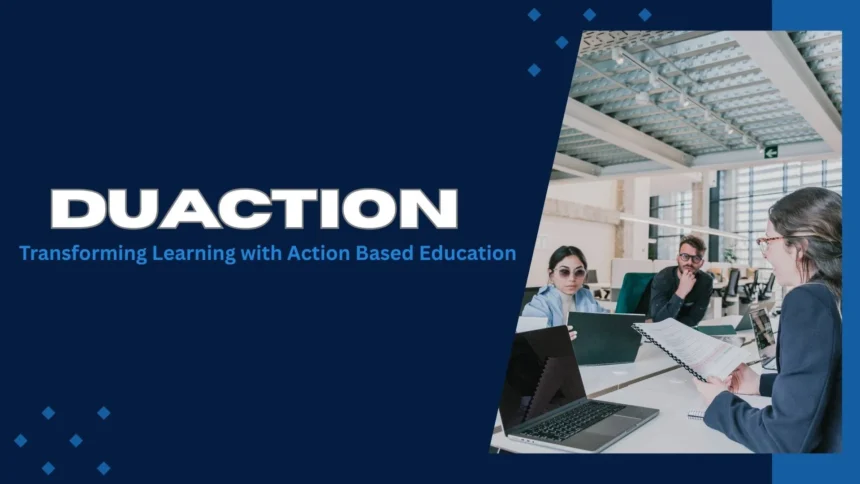In today’s fast-paced world, traditional education models often struggle to keep up with the demands of modern industries. Students are taught theories for years before they get an opportunity to apply them in real-world situations. This time gap between learning and practice often leads to a loss of knowledge retention and limited skill development. Enter Duaction, a portmanteau of “dual” and “action.” Duaction represents an innovative educational approach that combines theoretical learning with immediate practical application. Instead of treating theory and practice as separate phases, Duaction merges them into a continuous cycle of acquiring knowledge and applying it simultaneously.
- What is Duaction?
- The Core Principles of Duaction
- Benefits of Duaction in Modern Education
- Duaction vs. Traditional Learning Approaches
- Applications in Different Fields
- The Psychological and Cognitive Foundations of Duaction
- Challenges and Considerations in Implementing Duaction
- Duaction and the Future of Learning
- Conclusion
What is Duaction?
Duaction is an integrated learning approach that eliminates the traditional divide between classroom knowledge and hands-on experience. While conventional models often prioritize theory before practice, they emphasize learning by doing.
In essence, learners study a concept and apply it in real time, which allows them to see the relevance and practicality of what they are learning. This active engagement transforms education into a more dynamic, purposeful, and result-driven process.
The Core Principles of Duaction
Duaction is built on a set of foundational principles that redefine how education and training are structured:
- Simultaneity of Learning and Application: Learners acquire knowledge and apply it immediately, reducing the risk of forgetting key concepts.
- Active Engagement: Instead of passively listening or memorizing, learners actively participate in tasks that reinforce concepts.
- Contextual Understanding: Applying theory in a real-world context ensures that learners not only understand “what” but also “why” and “how.”
- Feedback Loop: Immediate feedback from practice helps learners refine their understanding and improve performance continuously.
- Skill Development: By merging learning with practice, learners develop both cognitive knowledge and practical skills simultaneously.
Benefits of Duaction in Modern Education
Its model offers a range of advantages that address the limitations of traditional education and training systems.
Enhanced Knowledge Retention
Cognitive science shows that information applied immediately after learning is retained longer. Duaction leverages this principle to ensure that learners not only memorize concepts but also internalize them.
Deeper Understanding
When students test theories in practical environments, they gain insights beyond textbooks. This experiential learning leads to a holistic grasp of concepts.
Real-World Readiness
Employers often highlight the gap between academic knowledge and workplace skills. Duaction narrows this gap by preparing learners with job-ready competencies from the start.
Increased Motivation and Engagement
Traditional passive learning often leads to disengagement. It keeps learners motivated by allowing them to see immediate value in what they learn.
Continuous Improvement
Through its cycle of learning, application, and feedback, Duaction fosters a culture of lifelong learning and adaptability.
Duaction vs. Traditional Learning Approaches
To understand the significance of Duaction, it’s essential to compare it with traditional education models.
| Aspect | Traditional Learning | Duaction Approach |
| Theory vs. Practice | Separate phases (theory first, practice later) | Integrated, simultaneous cycle |
| Knowledge Retention | Risk of forgetting before application | Enhanced retention through immediate practice |
| Engagement | Mostly passive (lectures, memorization) | Active, hands-on participation |
| Skill Development | Limited until later stages | Continuous skill-building alongside theory |
| Real-World Relevance | Often delayed or missing | Directly tied to practical application |
Applications in Different Fields
1. Higher Education
Universities and colleges can adopt Duaction by combining lectures with real-time projects, internships, and lab work. For example, engineering students could design prototypes while learning technical theories.
2. Corporate Training
Businesses can use Duaction to train employees by merging workshops with live problem-solving exercises. Instead of simulations detached from reality, employees tackle actual challenges while learning new strategies.
3. Vocational Education
Fields like healthcare, hospitality, and technology benefit from hands-on learning. Nursing students, for instance, can apply theoretical anatomy knowledge while practicing patient care under supervision.

4. Digital and Online Learning
E-learning platforms can integrate it by offering interactive tasks, live case studies, and real-time feedback. Learners don’t just watch tutorials; they practice as they progress.
5. Entrepreneurship and Innovation
Startups and innovation hubs thrive on its principles. Entrepreneurs test business models, apply marketing strategies, and adapt financial plans while learning from mentors and market realities.
The Psychological and Cognitive Foundations of Duaction
It is not just an educational buzzword; it is rooted in cognitive science and educational psychology.
- Experiential Learning Theory (Kolb): Suggests that knowledge is created through the transformation of experience.
- Constructivism: Learners build understanding by actively engaging with knowledge in context.
- Immediate Feedback Principle: Quick reinforcement strengthens memory and skill acquisition.
- Active Learning Strategies: Research shows active participation enhances comprehension, retention, and problem-solving.
Aligning with these proven principles offers a scientifically sound pathway to more effective learning.
Challenges and Considerations in Implementing Duaction
While it is highly effective, implementing it requires careful planning and resources:
- Infrastructure Needs: Institutions must provide labs, tools, and environments for practical application.
- Curriculum Redesign: Traditional syllabi may need restructuring to align theory with practice.
- Faculty Training: Educators must shift from being lecturers to facilitators of active learning.
- Assessment Methods: Evaluations should measure both conceptual understanding and applied skills.
- Scalability Issues: Implementing Duaction across large groups may require digital platforms and innovative solutions.
Despite these challenges, the long-term benefits outweigh the initial hurdles, making it a worthwhile investment for educational institutions and organizations.
Duaction and the Future of Learning
The future of education lies in bridging the gap between knowing and doing. With industries evolving rapidly, employers need graduates who can think critically, adapt quickly, and perform effectively. It aligns perfectly with these demands.
Emerging technologies like virtual reality (VR), augmented reality (AR), and artificial intelligence (AI) can further enhance Duaction by creating immersive, interactive, and adaptive learning environments. For example:
- VR simulations for medical training
- AI-driven feedback on coding exercises
- AR-enabled construction and design projects
As these technologies evolve, Duaction will become an even more powerful driver of skill-based, future-ready education.
Conclusion
Duaction is more than just a new educational trend; it is a paradigm shift that redefines how we approach learning and skill development. By integrating theory and practice into a continuous, action-driven cycle, Duaction enhances retention, deepens understanding, and equips learners with real-world competencies.
Whether in universities, corporate training programs, vocational institutes, or online platforms, Duaction offers a future-proof model of education that prepares individuals for success in an ever-changing world.






